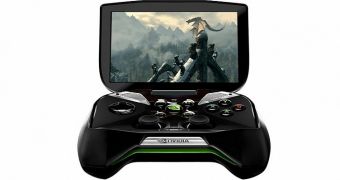It's one thing to know about a chip that is supposed to power the new generation of mobile devices, but another to actually see evidence of how well it performs.
In this case, though, it's not the chip itself, the Tegra K1 SoC (system-on-chip) that is experiencing a sudden spike in general attention.
Instead, it's NVIDIA's Shield handheld gaming console, which has 4 GB of RAM, a 5-inch HD display, and the Android 4.4.2 operating system (KitKat). Below is the AnTuTu benchmark that exposes this information.
Previously, the Shield had 2 GB RAM a Tegra 4 processor, but the Shield 2 will boast the Tegra K1 enabling it to play and even stream games to Smart TVs.
The Tegar K1 has a quad-core ARM-based CPU module (2.5 GHz), plus an NVIDIA Kepler GPU with 192 CUDA cores. It's on the same level as a mid-range add-in graphics card for desktops.
The NVIDIA Shield 2 console will have a 1440 x 810 or 1440 x 900 display, plus a 0.3 megapixel camera on the front. Currently, the Shield makes do with a 1280 x 720 LCD, although “making do” isn't totally appropriate, since that resolution is pretty good for the size.

 14 DAY TRIAL //
14 DAY TRIAL //